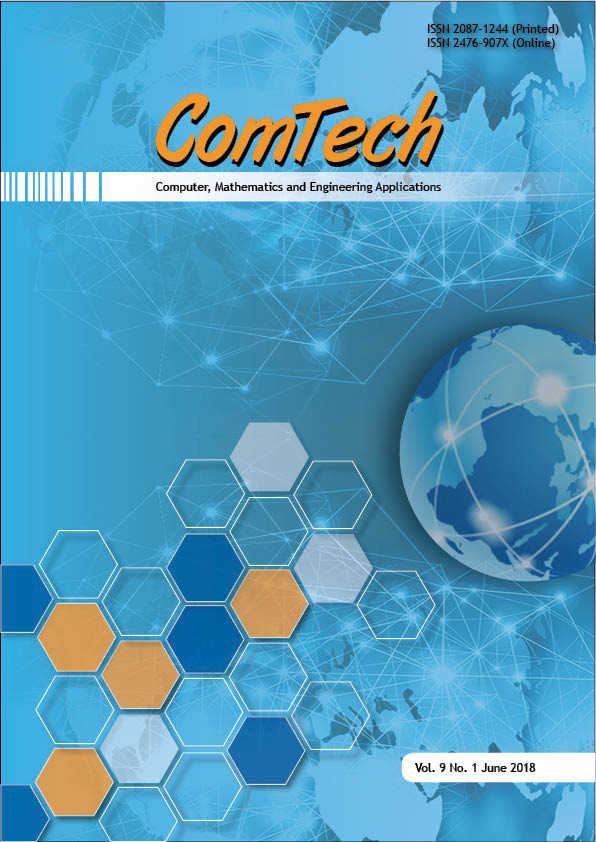Gamification for the Ancient Kingdom of Nusantara with User-Centered Design Approach
DOI:
https://doi.org/10.21512/comtech.v9i1.4171Keywords:
gamification, user design approach, ancient kingdom, Nusantara kingdomsAbstract
The purpose of this research was to conserve the history of Nusantara kingdoms with the interesting way for the students. The researchers proposed a method by combining the history of ancient kingdoms in Nusantara with the game. It was done by using gamification with the user-centered design approach. The data collection used questionnaires and literature review. Moreover, the researchers identified the resources by applying the gamification element, developing the game based on user requirement, and evaluating the usability testing. The result shows that the implemented gamification in learning Nusantara can attract the students to learn about history. Based on the result of usability testing that has already been tested using the prototype, it proves that the user interest to learn the history of the ancient kingdom in Nusantara is increased. The results also imply that gamification indeed is one of a suitable method to be used as a medium for students to learn about history, especially the ancient kingdoms in Indonesia.
References
Abras, C., Maloney-Krichmar, D., & Preece, J. (2004). User-centered design. In W. S. Bainbridge (Ed.), Encyclopedia of human-computer interaction. Thousand Oaks: Sage Publications.
Amiryousefi, M., & Ketabi, S. (2011). Mnemonic instruction: A way to boost vocabulary learning and recall. Journal of Language Teaching and Research, 2(1), 178-182. http://doi.org/10.4304/jltr.2.1.178-182
Coenen, T., Mostmans, L., & Naessens, K. (2013). MuseUs: Case study of a pervasive cultural heritage serious game. Journal on Computing and Cultural Heritage (JOCCH), 6(2), 8.
Deterding, S., Dixon, D., Khaled, R., & Nacke, L. (2011). From game design elements to gamefulness: Defining gamification. In Proceedings of the 15th International Academic Mindtrek Conference: Envisioning Future Media Environments (pp. 9-15). ACM.
Huang, W. H. Y., & Soman, D. (2013). Gamification of education. In Research Report Series: Behavioural Economics in Action. Rotman School of Management, University of Toronto.
Kontogianni, G., & Georgopoulos, A. (2015). A realistic gamification attempt for the Ancient Agora of Athens. In Digital Heritage, 2015 (Vol. 1, pp. 377-380). IEEE.
Law, E. L., Watkins, D. E., Barwick, J. P. L., & Elee, K. (2015). Gamifying research on children’s understanding of law in their lives. In CHI 2015 Workshop “Researching Gamification : Strategies, Opportunities, Challenges, Ethics.â€
Nakashima, R., Sato, T., & Maruyama, T. (2017). Gamification approach to smartphone-app-based mobility management. Transportation Research Procedia, 25, 2349-2360. http://doi.org/10.1016/j.trpro.2017.05.234
Nicholson, S. (2012). A user-centered theoretical framework for meaningful gamification. Games+ Learning+Society, 8(1), 223-230.
Pea, R. D. (1987). User centered system design: New perspectives on human-computer interaction. Journal Educational Computing Research, 3, 129-134.
Poetry Foundation. (2017). Diane Ackerman. Retrieved from https://www.poetryfoundation.org/poets/diane-ackerman
Oak, J. W., & Bae, J. H. (2014). Development of smart multiplatform game app using UNITY3D engine for CPR education. International Journal of Multimedia and Ubiquitous Engineering, 9(7), 263-268. http://doi.org/10.14257/ijmue.2014.9.7.22
Page, T. (2014). Skeuomorphism or flat design: Future directions in mobile device User Interface (UI) design education. International Journal of Mobile Learning and Organisation, 8(2), 130. http://doi.org/10.1504/IJMLO.2014.062350
Rawendy, D., Ying, Y., Arifin, Y., & Rosalin, K. (2017). Design and development game Chinese language learning with gamification and using mnemonic method. Procedia Computer Science, 116, 61-67. http://doi.org/10.1016/j.procs.2017.10.009
Ritter, F. E., Baxter, G. D., & Churchill, E. F. (2014). Foundations for designing user-centered systems: What system designers need to know about people. Springer Science & Business Media.
Rogers, S. (2014). Level up! The guide to great video game design (2nd ed.). United Kingdom: John Wiley & Sons.
Seaborn, K., & Fels, D. I. (2015). Gamification in theory and action: A survey. International Journal of Human-Computer Studies, 74, 14-31.
Ying, Y., Rawendy, D., & Arifin, Y. (2016). Game education for learning Chinese language with mnemonic method. In International Conference on Information Management and Technology (ICIMTech) (pp. 171-175). IEEE.
Downloads
Published
How to Cite
Issue
Section
License
Authors who publish with this journal agree to the following terms:
a. Authors retain copyright and grant the journal right of first publication with the work simultaneously licensed under a Creative Commons Attribution License - Share Alike that allows others to share the work with an acknowledgment of the work's authorship and initial publication in this journal.
b. Authors are able to enter into separate, additional contractual arrangements for the non-exclusive distribution of the journal's published version of the work (e.g., post it to an institutional repository or publish it in a book), with an acknowledgment of its initial publication in this journal.
c. Authors are permitted and encouraged to post their work online (e.g., in institutional repositories or on their website) prior to and during the submission process, as it can lead to productive exchanges, as well as earlier and greater citation of published work.
 USER RIGHTS
 All articles published Open Access will be immediately and permanently free for everyone to read and download. We are continuously working with our author communities to select the best choice of license options, currently being defined for this journal as follows:




















